|
Love Joseph Cornell's work, and this video captures it beautifully. Give a listen — take a look. Joseph Cornell by Victoria Taylor-Gore
0 Comments
In my work, I often portray memory as something evoked by triggers that cannot be articulated simply as a "story". Memory occurs in muddied layers, levels, and pieces, and is metamorphosed according to what one chooses to remember at a particular moment in time about past events. A Childhood, illustrates memory in this manner. The first layer is from my perspective as an adult woman and the artist creating the piece and recalling my childhood in Mexico. That recollection quickens the second level—that of the child looking at a magical and vibrantly colored world. Hence the surreal, warm, and brightly colored Mexican landscape painted on the door. The third layer, within the box, is from the perspective of the little girl taking the form of her first doll and reliving her childhood in Mexico. It is within this realm that memory becomes tactile and the child comes to life by turning the handle and propelling her wind chime legs. And finally, the fourth layer is that of the girl with a fixed gaze, looking straight ahead from the past to the future at a different land (the image on inside panel of the door) and through the porthole-like viewer at her own reflection as an adult woman. Thanks to my brother, Horacio F. Acevedo (Chito) for his highly skilled assistance with the hardware of this piece. This piece is a manifestation of a sketch I drew of a woman tossed in a desolate field, accompanied and comforted by an angel. I found the idea of the angel appealing but wanted something more powerful, consequently, it became a disembodied angel’s head on a box – a “talking head” communicating by visual means. He is disembodied because he is spirit, not flesh. The piece is an interactive assemblage employing found objects, an oil painting, and a papier-mâché and paper pulp sculpture. The box, which supports the angel’s head and wings, is a found object. The box’s door is of non-glare Plexiglas selected because it provides a slightly blurry view when an image isn’t directly beneath it. Inlaid in the Plexiglas is a round magnifier, which is intended to draw the viewer closer for a detailed examination of what lies on the back surface – an oil painting based on my initial sketch of a partially nude female, lying in a field, surrounded by skulls. The difference between my painting and sketch is that rather than being comforted by an angel, the woman is being groped by a demon – symbolic of the killer(s) responsible for murdering over 450 females in Ciudad Juárez. The door can be opened for a closer unhindered view. Rastros y Cronicas: Women of Juarez Exhibit – Co-Curated by Dolores, Mercado and Linda Xochitl Tortolero. To view a video about the issue, link to: http://vimeo.com/7595547 – Women of Juarez by Matthew Cunningham. The following is a poem I wrote as I was creating the assemblage shown below called Intangible Sweetness. The poem is included in the background of this mixed media piece. Big girl face, little girl soul Wallowing in distant sadness. Muted mauve mist, dingy dustless tomb burying her dolls and innocence. Big girl face, little girl soul searching for intangible sweetness. Hazy glass pipe crystal rock candy forgetting–for a fleeting hour.
Thanks to my brother, Horacio F. Acevedo, for helping me with the hardware on this piece. I could not have done it without him.
|
Archives
July 2024
Categories
All
|
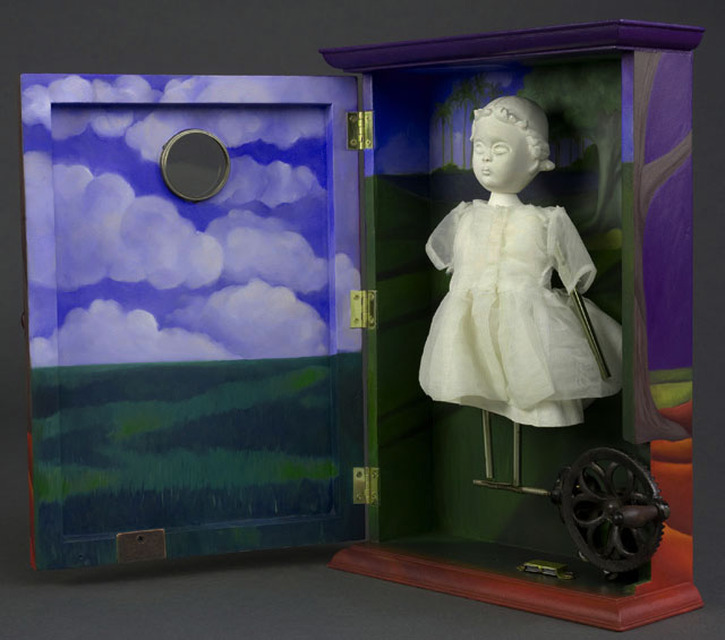
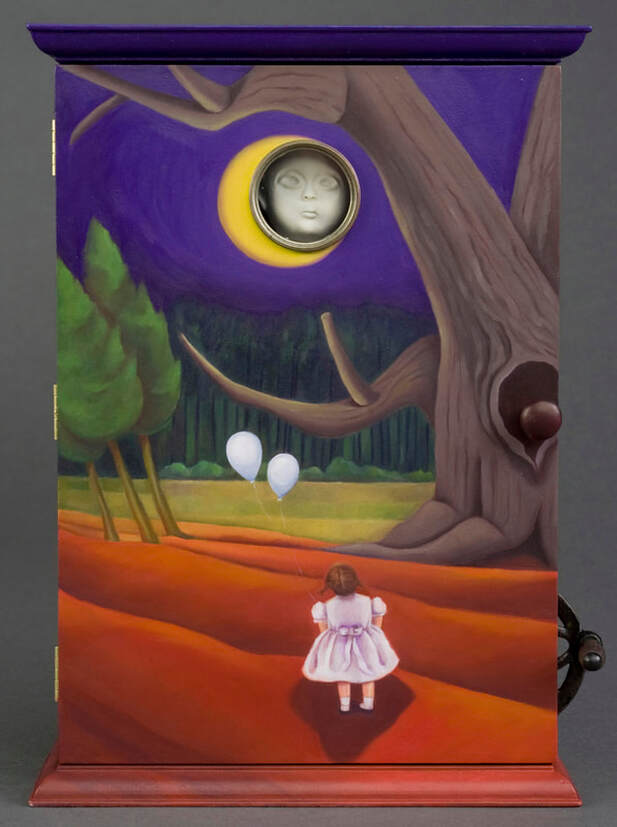
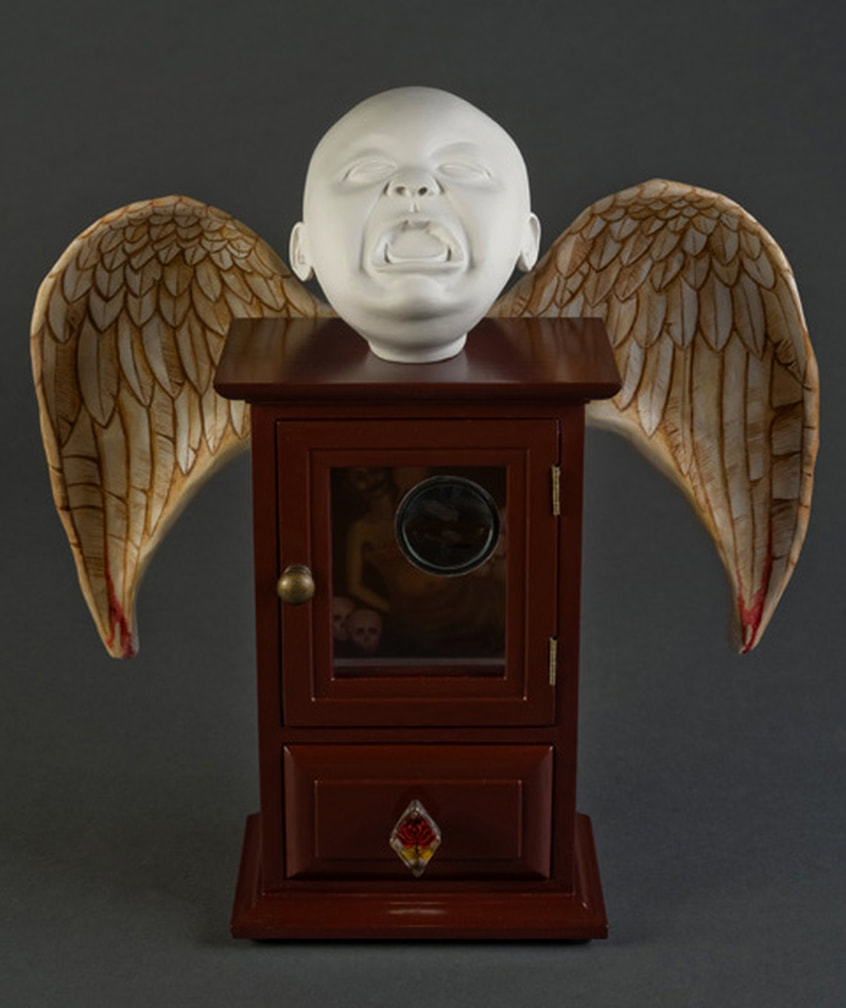
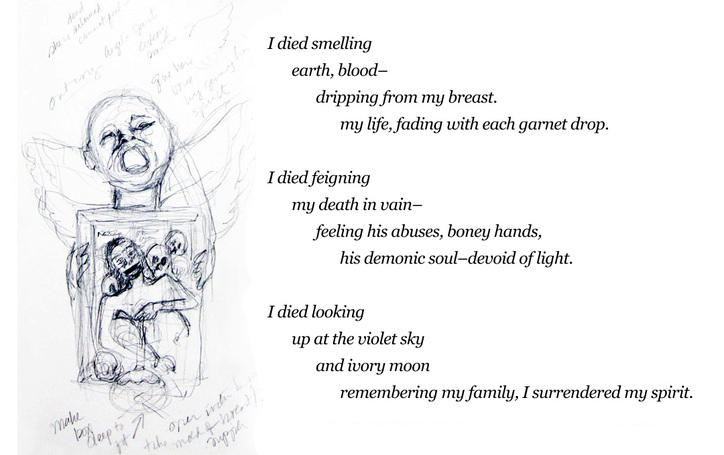
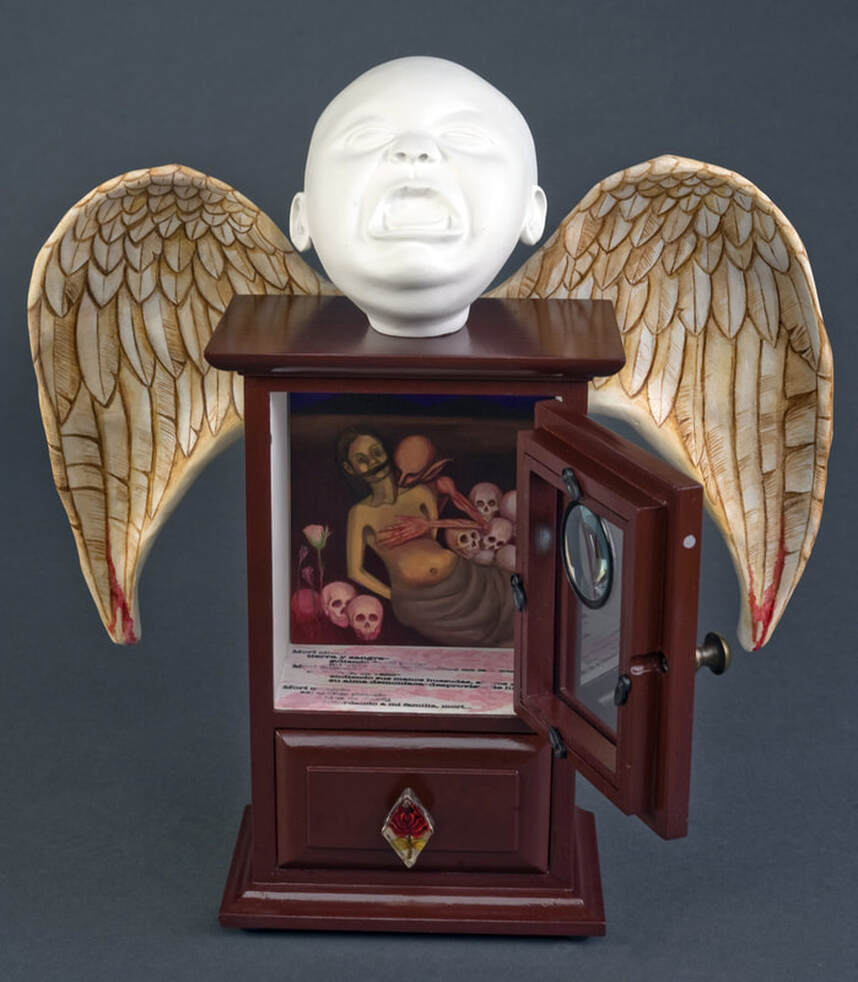
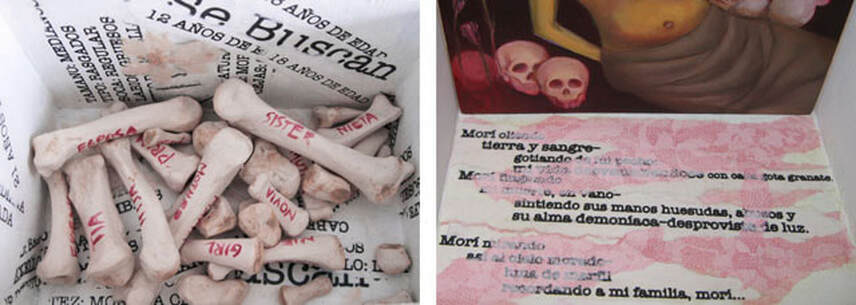
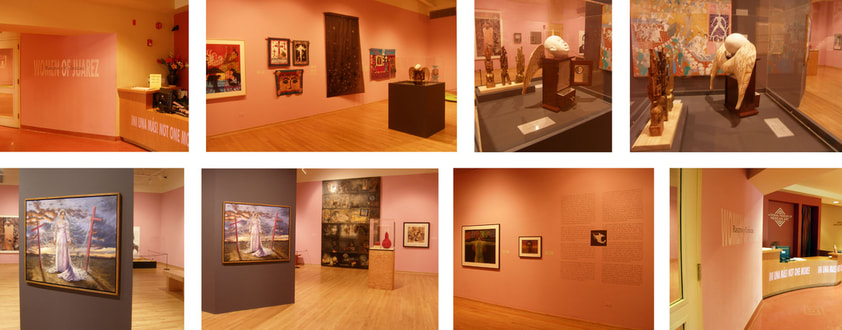

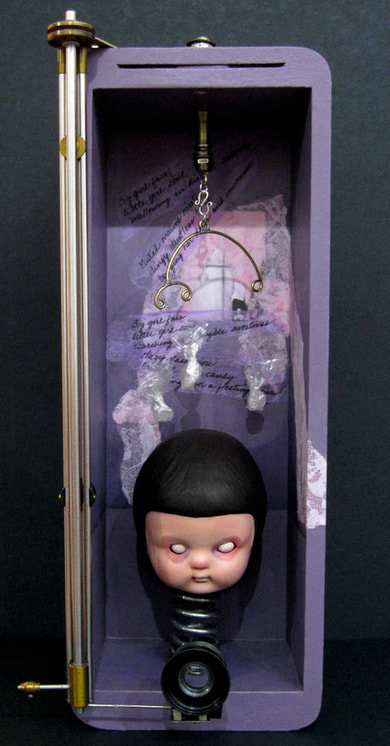
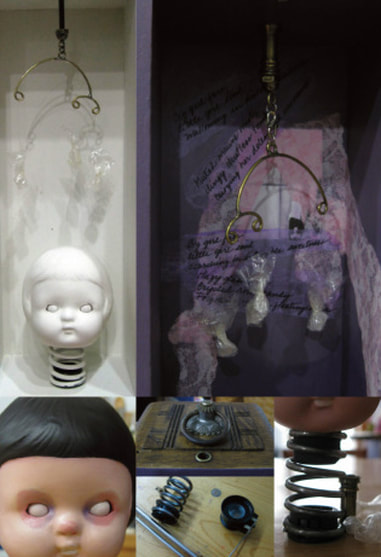

 RSS Feed
RSS Feed